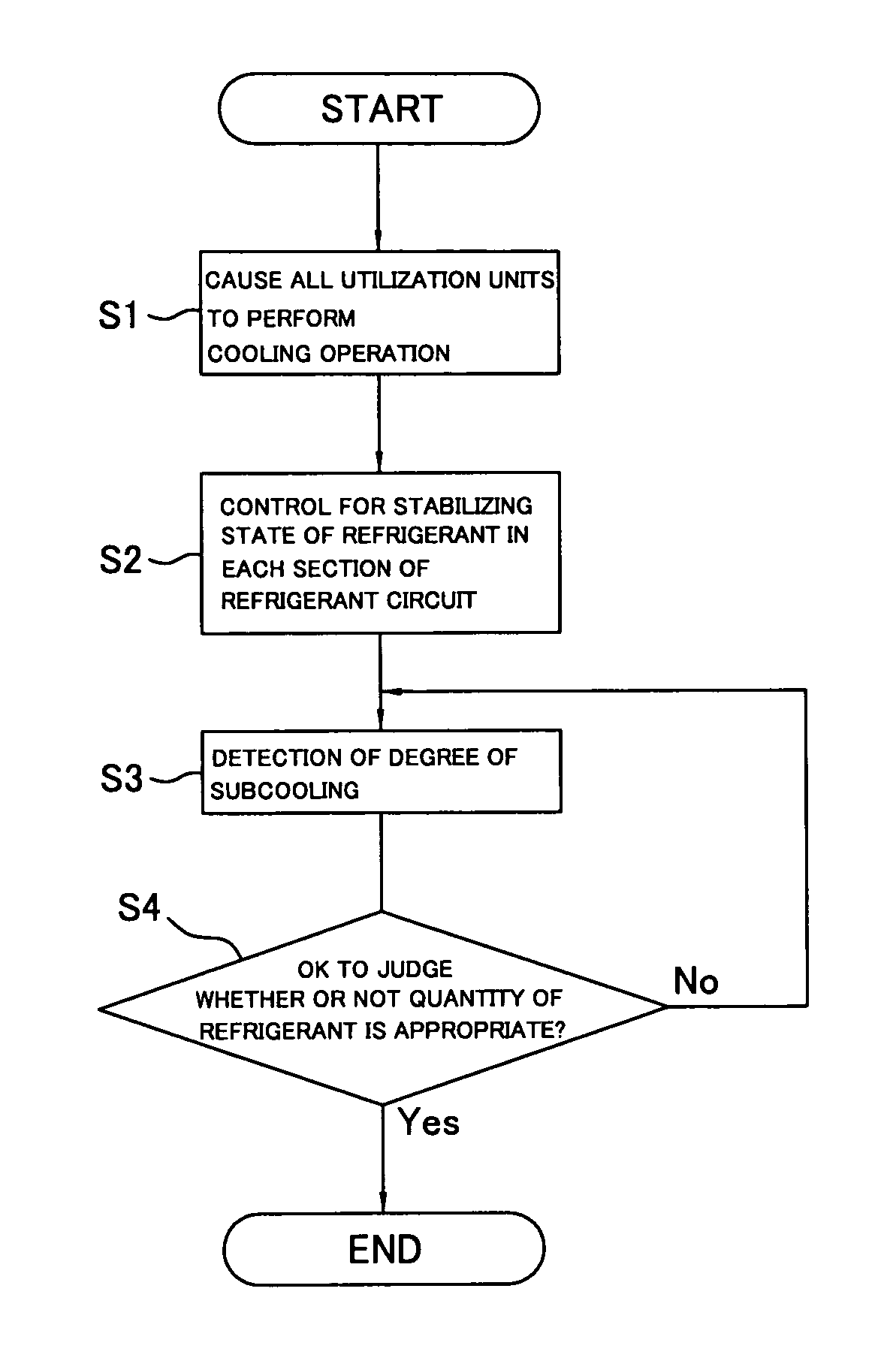Air conditioner with refrigerant quantity judging mode
a technology of refrigerant quantity and air conditioner, which is applied in the field of air conditioner with refrigerant quantity judging mode, can solve the problems of high potential for the judging accuracy of judging whether or not the quantity of refrigerant is appropriate to become even worse, and it is difficult to employ the above-described conventional function of judging whether, so as to achieve the effect of detecting more accurately and improving the judging accuracy
- Summary
- Abstract
- Description
- Claims
- Application Information
AI Technical Summary
Benefits of technology
Problems solved by technology
Method used
Image
Examples
modification 1
(4) Modification 1
[0119]In the above air conditioner 1, whether or not the quantity of refrigerant is appropriate at the time of automatic refrigerant filling and at the time of refrigerant leak detection is judged by detecting the degree of subcooling of the refrigerant in the outlet of the heat source heat exchanger 23, but rather than detecting the degree of subcooling, whether or not the quantity of refrigerant is appropriate may also be judged by detecting another operation state quantity that varies along with variations in the degree of subcooling.
[0120]For instance, when the above degree of superheating control and evaporation pressure control (and preferably condensation pressure control also) are being performed, a tendency for the openings of the utilization expansion valves 41 and 51 performing degree of superheating control to become smaller appears because the quality of wet vapor of the refrigerant flowing into the utilization heat exchangers 42 and 52 after being exp...
modification 2
(5) Modification 2
[0122]In the above refrigerant leak detection operation, an example of a case was given where control was performed to switch between the normal operation mode and the refrigerant quantity judging operation mode at constant time intervals as indicated in FIG. 8 and the description thereof, but the invention is not limited to this.
[0123]For instance, instead of the modes being forcibly switched, a switch or the like for switching to the refrigerant quantity judging operation mode may be disposed in the air conditioner 1, so that a serviceman or an installation manager periodically performs refrigerant leak detection operation by operating the switch or the like at a locality.
[0124]In the preceding description in regard to refrigerant leak detection operation, the description “it is not necessary to refer to the previous judgment result or the like when judging whether or not the quantity of refrigerant is appropriate because it is ensured that whether or not the qua...
PUM
| Property | Measurement | Unit |
|---|---|---|
| time | aaaaa | aaaaa |
| evaporation pressure | aaaaa | aaaaa |
| flow rate | aaaaa | aaaaa |
Abstract
Description
Claims
Application Information
 Login to View More
Login to View More - R&D
- Intellectual Property
- Life Sciences
- Materials
- Tech Scout
- Unparalleled Data Quality
- Higher Quality Content
- 60% Fewer Hallucinations
Browse by: Latest US Patents, China's latest patents, Technical Efficacy Thesaurus, Application Domain, Technology Topic, Popular Technical Reports.
© 2025 PatSnap. All rights reserved.Legal|Privacy policy|Modern Slavery Act Transparency Statement|Sitemap|About US| Contact US: help@patsnap.com



